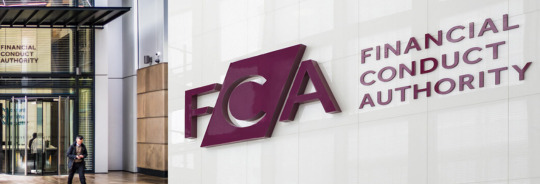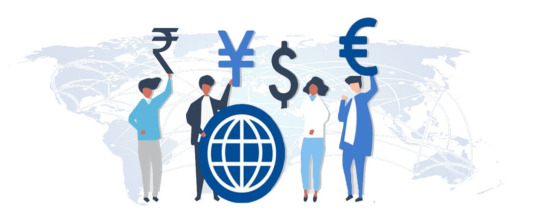#Crypto investment in India
Explore tagged Tumblr posts
Text
Best Future of crypto currency in India
Cryptocurrencies have become a popular investment option in recent years, and India is no exception. With the growth of digital currencies and blockchain technology, more and more investors in India are considering investing in cryptocurrencies as a way to diversify their portfolios and potentially earn high returns. One platform that has gained popularity in the Indian market is MIR-Token.com, which offers a range of crypto investment options. In this article, we will explore the benefits of crypto investment in India with MIR-Token.com.

Diversification
Diversification is a key strategy in any investment portfolio. It is important to spread risk across different assets to minimize losses and maximize returns. One of the benefits of crypto investment with MIR-Token.com is that it allows investors to diversify their portfolios beyond traditional assets such as stocks, bonds, and real estate.
With MIR-Token.com, investors can access a range of digital currencies, including Bitcoin, Ethereum, Litecoin, and many others. This diversity of crypto assets allows investors to spread their risk across different currencies, minimizing the impact of any single currency's performance on their overall investment.

High Returns
Crypto investment can offer high returns compared to traditional investments. While it is true that the crypto market can be volatile, it is also true that many investors have made significant gains through crypto investment. For example, Bitcoin's price has increased from less than $1 in 2010 to over $50,000 in 2021, representing a huge return for early investors.
MIR-Token.com offers investors the potential for high returns through its crypto investment options. With its user-friendly platform and a wide range of digital currencies, MIR-Token.com enables investors to access the crypto market and take advantage of potential growth.

Low Fees
One of the benefits of crypto investment with MIR-Token.com is its low fees. Traditional investment options such as mutual funds and stocks often come with high fees, which can eat into investors' returns. In contrast, MIR-Token.com charges low fees for its crypto investment services.
This low fee structure is possible because crypto investment is a decentralized market, meaning there are no intermediaries such as brokers or middlemen. As a result, investors can save on fees and keep more of their returns.
Security
Security is a key concern for any investor, especially when it comes to digital currencies. The crypto market has been plagued by security breaches and hacking attacks in the past, leading to the loss of millions of dollars. However, MIR-Token.com takes security seriously and employs various measures to protect investors' assets.
MIR-Token.com uses advanced encryption and security protocols to ensure that investors' funds and personal information are secure. The platform also offers two-factor authentication and other security features to prevent unauthorized access to investors' accounts.
Ease of Use
One of the benefits of crypto investment with MIR-Token.com is its ease of use. The platform is designed to be user-friendly, even for investors who are new to the world of digital currencies. MIR-Token.com offers a simple and intuitive interface that allows investors to buy, sell, and trade digital currencies with ease.
Additionally, MIR-Token.com offers a range of educational resources to help investors learn more about crypto investment and the crypto market. These resources include articles, videos, and tutorials, which can help investors make informed investment decisions.
Liquidity
Liquidity is another benefit of crypto investment with MIR-Token.com. In traditional investments such as real estate or mutual funds, it can be difficult to access funds quickly in case of an emergency. However, crypto investments are highly liquid, meaning they can be bought and sold quickly.
With MIR-Token.com, investors can buy and sell digital currencies at any time, giving them the
Read more:-
Crypto currency in India
Crypto investment in India
Mining investment in India
best way to investment Money in India
best crypto exchange in India
crypto market in India
crypto currency trading strategies,in India
Mining in India
Best Future of crypto currency in India
Crypto investment benefits in India
Source:- https://mirtoken.blogspot.com/2023/02/best-future-of-crypto-currency-in-india.html
#Crypto investment benefits in India#Best Future of crypto currency in India#Mining in India#crypto currency trading strategies#in India#crypto market in India#best crypto exchange in India#best way to investment Money in India#Mining investment in India#Crypto investment in India#Crypto currency in India
1 note
·
View note
Text
Seven Benefits Of Investing In Cryptocurrencies
Cryptocurrencies have gained their fair share of popularity and attention in recent years. They are easy to navigate and provide wealthy returns, although with some risk involved. You can make decent money with a full-proof plan and good knowledge about the best crypto investment options. As digital assets, they offer numerous benefits that traditional investments often lack.
Decentralization and security
Cryptocurrencies are decentralized which means they are not controlled by any central authority or government. This characteristic enhances security by reducing the risk of fraud and hacking. Unlike traditional banking systems, which rely on intermediaries and centralized databases, cryptocurrencies utilize advanced encryption techniques to secure transactions and protect users' funds.
Global accessibility and financial inclusion
One of the most remarkable benefits of cryptocurrencies is their global accessibility. Anyone with an internet connection can participate in cryptocurrency transactions, regardless of geographical location or financial status. It has the potential to promote financial inclusion, enabling individuals in underserved regions to access banking services and participate in the global economy.
Transparency and accountability
Cryptocurrencies run on blockchain technology, a decentralized ledger that records all activity in a transparent and inert manner. This transparency fosters trust among users by allowing them to verify and trace every transaction. Additionally, the blockchain eliminates the need for third-party intermediaries, reducing costs and enhancing accountability.
Potential for high returns
Cryptocurrencies have experienced significant price volatility, leading to the potential for high returns on investment. While this volatility carries risks, it also presents opportunities for substantial profits. Numerous individuals and institutional investors have witnessed substantial gains by investing in cryptocurrencies during the past decade. However, conduct thorough research about different crypto investment platform and trending cryptocurrencies to bid money on and be cautious when investing in this dynamic market.
Diversification and portfolio expansion
Cryptocurrencies provide an excellent opportunity for diversification, enabling investors to expand their portfolios beyond traditional assets like stocks and bonds. Adding cryptocurrencies to your investment mix can mitigate risk and increase the potential for higher returns. Diversification is a fundamental strategy for portfolio management, and cryptocurrencies offer a unique avenue for achieving it.
Innovation and technological advancements
The underlying technology behind cryptocurrencies, blockchain, has immense potential to revolutionize various industries. By investing in cryptocurrencies, you can support the development and implementation of innovative blockchain-based solutions. These solutions can transform sectors such as finance, supply chain management, healthcare, and more. Investing in cryptocurrencies provides financial benefits but also contributes to technological advancements.
Liquidity and accessibility to alternative investments
Cryptocurrencies offer high liquidity, allowing investors to quickly trade digital assets. This accessibility to alternative investments can be particularly beneficial in times of economic uncertainty. Cryptocurrencies operate independently of traditional financial systems, making them less susceptible to the fluctuations of traditional markets. As a result, cryptocurrencies can provide a hedge against economic volatility and diversify investment portfolios. Investing in cryptocurrencies presents several advantages making them an appealing option for investors. As with any investment, it is crucial to exercise caution, conduct thorough research, and seek professional advice before venturing into the cryptocurrency market.
#best platform for crypto investment#best investment platform for cryptocurrency#best crypto platform for investment#best cryptocurrency investment platform in india
2 notes
·
View notes
Text
We want to use this opportunity to appreciate everyone investing with our platform, Hashrate. The market has been so profitable to us and everyone investing with us. Below is this month earnings portfolio over $ $291,967.76 made within few weeks . Something we want you all to know is that you can make money from the comfort of your home, anywhere in the world. Take advantage of this life changing investment services to minimize loss and maximize profits. It is simple to understand, and it's not stressful when you create a personal live mining account on our website you will have to pick an investment plan to start with and you don't have to do the mining yourself. We mine⛏️ and you watch how your profits accumulate day by day in your mining account. Dm to get started now

#america#indonesia#india#pakistan#finance#business#accounting#marketing#investing#stock market#startup#invitation#art#home & lifestyle#like#follow#success#diy#crypto#binance
2 notes
·
View notes
Text
Discover Bitcoin's potential as an asset class with 9Point Capital. Transform your portfolio and embrace the evolution of wealth with expert insights.
#Digital asset investment service#Bitcoin#Gift City#Cryptocurrencies#Blockchain#Blockchain technology#Ethereum#Cryptocurrency in India#Cryptocurrency market#Dais#Portfolio management service#Assets management companies#Pms investment#Wealth management companies#Digital assets#Investment company in India#Crypto investments#Bitcoin ETF#Ethereum ETF#Solana ETF#Bitcoin ETF India
0 notes
Text

Hi dear brother and sister hi iam here to share the best platform which brings you huge cash. This is trusted by millions of users. They are earning daily . 100% you will satisfied with this platform and you will see miracle results. Just try now. Utilize this opportunity. After registration go to 💬 chat .Please visit here: https://crypto-mining.my.canva.site/

#free airdrop#free crypto mining#google trending#telegram earning#earn money online working in india#earn crypto by investing#Newyork trading
0 notes
Text
How to Manage Personal Finances During Inflation?
Inflation is a term that often finds its way into news headlines, and for a good reason: it affects the cost of living, diminishing the purchasing power of money over time. When inflation rises, everything from groceries to transportation costs can become more expensive, impacting household budgets significantly. Understanding how to manage personal finances during such times is crucial to maintaining financial stability. Here’s a creative and practical guide to help you navigate the challenges of inflation with smart budgeting and investment options.
Understand Inflation: The Invisible Cost
Before diving into strategies, it's important to understand what inflation is. Inflation is the rate at which the general level of prices for goods and services rises eroding purchasing power. This means that over time, the same amount of money buys fewer goods and services. For instance, if the inflation rate is 5%, something that costs ₹1,000 today will cost ₹1,050 a year from now.
Understanding inflation is essential for retirement planning and investments, as it directly impacts your long-term financial goals. It's a key concept that helps you compare savings options and make informed decisions about where to invest.
In today's market, investors are exploring various avenues like crypto investment, alternative investments, and fractional real estate investments rather than traditional investment options like stocks and mutual funds. These options can potentially offer returns that outpace inflation, preserving and growing your wealth over time. Additionally, considering asset allocation can help you effectively manage inflation risks in your retirement portfolio.

Adopt the 50/30/20 Rule for Budgeting
The 50/30/20 rule is a simple and effective budgeting method that can be adapted to manage finances during inflationary periods. This rule helps to categorize your spending into three main areas:
50% for Needs: Allocate half of your income to essential expenses such as housing, utilities, groceries, transportation, and insurance. In times of inflation, focus on ways to reduce costs in this category. For example, consider switching to more affordable brands for groceries, reducing utility usage, or opting for a fuel-efficient mode of transportation.
30% for Wants: This portion is for non-essential but enjoyable expenses, such as dining out, entertainment, and hobbies. During inflation, it might be wise to temporarily reduce spending in this area to free up funds for essentials and savings. Consider opting for budget-friendly entertainment options like streaming movies at home instead of going to a cinema or dining out less frequently.
20% for Savings and Debt Repayment: This part is crucial for securing your financial future. Use this portion to build an emergency fund, invest in inflation-beating assets like stocks or mutual funds, and pay off high-interest debts. Prioritizing debt repayment is essential, as rising inflation often leads to higher interest rates. Retirement planning should also be a priority here. Consider using NPS asset allocation to ensure a balanced retirement portfolio that can withstand market volatility. Exploring fractional real estate investments and other alternative investments can further enhance your financial strategy.
Build an Emergency Fund
An emergency fund acts as a financial safety net, providing a cushion during unexpected events like job loss or medical emergencies. During inflation, the value of your savings may decrease, so aim to have at least six months' worth of expenses in a readily accessible account. This practice is crucial for retirement planning.
Consider keeping some of this fund in liquid assets, such as a high-yield savings account or a fixed deposit, which offers a return that can help offset inflation. Remember, the key is to build a financial cushion while exploring various investment options that align with your overall strategy.

Invest in Inflation-Resistant Assets
Investing is a key strategy to combat inflation. Here are some investment options that are known to resist inflation:
Equities (Stocks): Historically, stocks have offered returns that outpace inflation over the long term. Investing in a diversified portfolio of stocks can help grow your wealth, even during inflationary periods.
Real Estate: Property values and rental income tend to rise with inflation. Investing in real estate can provide a hedge against inflation and generate passive income.
Gold: Gold is a traditional store of value and often performs well during inflation. Consider investing in gold through exchange-traded funds (ETFs) or digital gold options.
Government Bonds: Inflation-indexed bonds, such as the Inflation-Linked Savings Bonds (IINSS-C) offered in India, are designed to protect investors from inflation. These bonds adjust the principal and interest payments based on inflation rates.
Review and Adjust Your Budget Regularly
Inflation can cause prices to change rapidly, so it’s important to review your budget regularly and make adjustments as needed. Track your spending and identify areas where you can cut back or reallocate funds. For example, if food prices rise, look for discounts, buy in bulk, or opt for seasonal produce, which is often cheaper.
Compare Savings Options and Consider Alternative Investments
In high-inflation periods, it's crucial to understand your savings options. Traditional choices like high-yield savings accounts, fixed deposits, and money market accounts provide stability. However, exploring alternative investments such as peer-to-peer lending, cryptocurrencies, or commodities could offer higher returns and act as a hedge against inflation. Being aware of these options helps you make informed financial decisions.
Conclusion: Equip Yourself with Financial Knowledge
Inflation is inevitable, but it doesn’t have to disrupt your finances. By understanding budgeting methods like the 50/30/20 rule, maintaining an emergency fund, exploring various investment options, and staying informed, you can navigate inflation more effectively. The aim is to provide financial knowledge that empowers you to make the best decisions for your personal situation.
By understanding and applying these financial principles, you can navigate inflation more effectively, helping your money retain its value and continue to work efficiently for you.
#Investment Options In India#Crypto investment India#Commodity Investment India#Sukanya Samriddhi scheme returns
0 notes
Text
Unveiling Your Investment Journey in India: A Guide to Diverse Options

Embarking on your investment journey in India can be both exciting and rewarding. This guide will navigate you through various investment options tailored to different risk appetites, financial goals, and timelines. Whether you're a beginner or a seasoned investor, understanding these options will enhance your personal finance learning and financial education in India.
Retirement Planning in India: Embark on a well-planned journey toward a secure and fulfilling retirement. Discover a variety of investment options designed to meet your unique needs and goals:
National Pension Scheme (NPS): Benefit from customizable asset allocation and enjoy healthy returns. We'll provide in-depth insights into NPS returns and the factors that influence them.
Public Provident Fund (PPF): Take advantage of tax-free returns and a safe, government-backed investment.
Employee Provident Fund (EPF): Secure your future with contributions from both you and your employer, building a substantial retirement corpus.
Financial Education & Learning: In the world of finance, knowledge is power. Enhance your financial literacy with our comprehensive resources on personal finance and financial education in India. Learn the essentials of investing, and planning for the future, ensuring you make informed decisions every step of the way.
Beyond the Basics: Exploring Investment Avenues
Compare Savings Options: Dive into the details of Fixed Deposits (FDs), Public Provident Funds (PPF), Sukanya Samriddhi Yojana (a scheme for the girl child), and more. We’ll guide you in selecting the best options tailored to your financial goals.
Cryptocurrency in India: Dive into the dynamic world of cryptocurrencies—an exciting alternative investment avenue! While traditional assets like stocks and real estate have their place, digital currencies offer unparalleled liquidity, global accessibility, and potential for exponential growth. Whether you’re a seasoned investor or a curious newcomer, you may want to check out crypto investment as your next investment option!
Alternative Investments: Explore beyond stocks and bonds! Think of private equity, commodities, and hedge funds as your secret weapons for growing wealth. These options offer diversification and the potential for better returns.
Demystifying Investment Risks & Returns:
Understanding Risk: Investment decisions involve calculated risks. We'll break down the risk profiles of various options like Corporate Bonds, Capital Gain Bonds, and National Company Deposits (NCDs).
Investment Returns Updates: Investment returns updates cover products like Government Securities, Debt Portfolio Management Services (PMS), Flexi-Cap Funds, Index Funds, Balanced Advantage Funds, Multi-Asset Allocation Funds, Gold ETFs, Sovereign Gold Bonds (SGBs), Unit Linked Insurance Plans (ULIPs), Liquid Funds, and Fixed Maturity Plans (FMPs).
Join the Investment Conversation!
Indvesting is your one-stop shop for all things personal finance in India. Subscribe to our newsletter for regular updates, insightful articles, and expert advice. Let's embark on your investment journey together!
Visit: https://indvesting.com/
1 note
·
View note
Text
As the crypto landscape evolves in India, selecting the best crypto wallets becomes crucial for both new and experienced users. In 2024, several crypto wallets stand out for their features, security, and user experience.
WazirX: Known for its seamless integration with India's largest crypto exchange, WazirX offers a user-friendly mobile app for buying, selling, and storing cryptocurrencies.
CoinDCX: This platform provides a versatile wallet supporting multiple cryptocurrencies and offers features like staking and interest on holdings.
ZebPay: A trusted name in India's crypto space, ZebPay offers a secure wallet with features like instant INR withdrawals and top-notch security protocols.
Trust Wallet: A popular choice for mobile users, Trust Wallet supports a wide range of cryptocurrencies and allows users to participate in decentralized finance (DeFi) activities.
MetaMask: Ideal for those exploring Ethereum and DeFi, MetaMask is a browser extension wallet offering a convenient way to interact with decentralized applications (dApps).
Choosing the best wallet depends on individual preferences, including security, ease of use, and supported features. It's essential to research and assess each option based on personal needs and risk tolerance.
0 notes
Text
Get the Top Crypto Trading Platform - YaCrypto
YaCrypto gives the top crypto trading platforms. Our platform is designed to provide comprehensive guidance and support. YaCrypto is your go-to destination for cryptocurrency trading for beginners.
#cryptocurrency exchange platform in india#indian crypto trading platform#india crypto platform#platform for cryptocurrency in india#crypto trading exchange in india#crypto exchange with lowest fees in india#top crypto trading platform in india#best platform for crypto in india#platform to invest in cryptocurrency in india#top crypto platforms in india#cryptocurrency for beginners in india#cryptocurrency trading for beginners in india#cryptocurrency in india for beginners#top crypto trading platforms in india
1 note
·
View note
Text
WinkLink (WIN) Crypto Price Predictions 2025,2030,2040,2050
Winlink (WIN) emerges as a revolutionary force within the TRON ecosystem, offering a comprehensive oracle solution that bridges the gap between the real world and the blockchain space. Bitcoin to Hit $150K! Shocking Insights! Winklink (WIN) fundamentally strives to make the world of blockchain more understandable and accessible to everyone. With the acquisition of justlink.io and listing on…

View On WordPress
#buy wink crypto#is wink coin a good investment#where to buy#will wink coin reach $1#win coin INR#win coin price prediction#win coin price prediction in INR#win price#win price prediction#win to USD#wink coin future#wink coin price in India#wink coin price prediction 2025#wink coin price prediction 2030#wink coins#Wink crypto#wink crypto price#wink forecast#wink gaming#wink token#winklink crypto#winklink crypto price prediction
0 notes
Text
Understanding the Challenges of Moving from LIBOR: Navigating the Tides

In the vast ocean of global finance, the London Interbank Offered Rate (LIBOR) stands out. It has long served as a crucial navigational beacon. Established in the mid-1980s, LIBOR quickly became the world’s most widely used benchmark for short-term interest rates. It’s similar to the financial world’s heartbeat. It underpins an estimated $350 trillion worth of financial contracts worldwide. These range from complex derivatives to simple home mortgages.
LIBOR represents the average interest rate for major global banks. They can borrow from one another in the international interbank market for short-term loans. LIBOR is published in five currencies: U.S. dollar, Euro, British pound, Japanese yen, and Swiss franc. It comes in seven different maturities ranging from overnight to one year. This provides a consistent, reliable gauge of the cost of unsecured borrowing in the London interbank market.
The importance of LIBOR in the financial system cannot be overstated. It serves as a reference rate for many financial products. These include syndicated loans, adjustable-rate mortgages, student loans, credit cards, and various types of derivatives. It’s the foundation of the global financial system. It influences borrowing costs throughout the economy. Moreover, it affects the finances of corporations, governments, and consumers alike.
However, LIBOR is the backbone of the financial world. Yet, it doesn’t come without its flaws. The financial world is preparing to navigate a future without it.
The Need for Transition from LIBOR

The journey towards a post-LIBOR world began with a series of unfortunate events. These events shook the financial world to its core. The LIBOR crisis erupted in 2012. It revealed that some banks had been manipulating the rate to their advantage. This led to a crisis of confidence in the benchmark. The scandal tarnished the reputation of LIBOR. It also highlighted its inherent vulnerabilities. One primary concern was that it was based on estimates and not actual transactions. This made it easier to manipulate.
The implications of the crisis were far-reaching. It led to billions of dollars in fines for the banks involved. Additionally, it casts a long shadow over the integrity of the global financial system. In response, it sparked a global conversation. The discussion centred around the need for a more robust and transparent alternative. This alternative needed to withstand the tests of market integrity and reliability.
How Everything Led to LIBOR’s End

In response to the crisis, regulatory bodies worldwide began pushing for a transition away from LIBOR. In the UK, the Financial Conduct Authority (FCA) made an announcement in 2017. It stated it would no longer ask or persuade banks to submit rates for LIBOR’s calculation after 2021. This announcement effectively set the clock ticking for the end of LIBOR.
The final nail in the coffin was in March 2021. The administrator of LIBOR, ICE Benchmark Administration, confirmed the termination dates for most LIBOR settings. It was announced that several LIBOR settings would cease after December 31, 2021. This included all the British pound, euro, Swiss franc, and Japanese yen settings. Additionally, the “one-week and two-month U.S. dollar settings” were included. The remaining U.S. dollar settings would cease immediately after June 30, 2023.
The announcement marked the beginning of the end for LIBOR. It set in motion a significant transition in global finance history. The transition from LIBOR is more than just a regulatory requirement. It’s a crucial step towards a stable and trustworthy financial system.
Challenges in the Transition from LIBOR

Navigating away from LIBOR is no small feat. The transition presents a multitude of challenges that financial institutions and market participants must overcome.
One of the most significant challenges is the complexity of replacing LIBOR in existing contracts, often referred to as “legacy contracts”. These contracts, which can extend beyond 2023, were drafted with LIBOR as the reference rate and often lack adequate provisions for the permanent removal of the benchmark. Modifying these contracts to replace LIBOR with a new rate is an enormous task, both legally and operationally, and raises the potential for legal disputes and market disruption.
The transition also involves the adoption of new risk-free rates (RFRs) that are fundamentally different from LIBOR. Unlike LIBOR, which reflects the credit risk of unsecured interbank lending, RFRs such as the Secured Overnight Financing Rate (SOFR) in the U.S. and the Sterling Overnight Index Average (SONIA) in the UK are nearly risk-free, as they are based on actual transaction data from secure lending markets. This shift from a credit-sensitive rate to a risk-free rate could have significant implications for the pricing and risk management of financial products.
Adding to the complexity is the absence of term structures in the new RFRs. While LIBOR is quoted for different maturities, most RFRs are overnight rates. The development of term rates based on RFRs is still in progress, and until these are widely available and accepted, the transition will remain a challenge.
The impact of the transition extends to various financial sectors and products. From securities, where LIBOR is deeply embedded, to syndicated loans and adjustable-rate mortgages that reference LIBOR, the transition will require significant adjustments. Market participants will need to adapt to new pricing mechanisms, risk management tools, and system changes, all while ensuring minimal disruption to financial markets.
Potential Solutions and Strategies for the Transition

Despite the challenges, the financial world is not walking without a light in this dark transition. Several solutions and strategies are being developed and implemented to navigate the shift from LIBOR. A key part of the solution lies in the development of alternative RFRs.
In the U.S., the Federal Reserve has endorsed the Secured Overnight Financing Rate (SOFR) as the replacement for U.S. dollar LIBOR. SOFR is based on actual transactions in the Treasury repurchase market, making it a more robust and reliable benchmark.
In the UK, the Bank of England has identified the Sterling Overnight Index Average (SONIA) as the preferred alternative to the sterling LIBOR.
These RFRs, along with others being developed around the world, are set to play a pivotal role in the post-LIBOR era.
Another crucial strategy for the transition is the incorporation of robust fallback language in financial contracts. Fallback provisions outline the steps to be taken and the replacement rate to be used if LIBOR ceases to exist. The International Swaps and Derivatives Association (ISDA) has developed a standard fallback protocol, which many market participants have agreed to, providing a clear path for the transition in derivative contracts.
Technology and data also hold the key to managing the transition effectively. Financial institutions are leveraging technology solutions to identify and analyze LIBOR exposure in their contract portfolios. Advanced analytics, fintech solutions and AI are being used to extract and review contractual terms at scale, enabling institutions to manage the transition in a more efficient and risk-controlled manner.
The transition from LIBOR is undoubtedly a complex and challenging process. However, with the right strategies and solutions in place, the financial world can successfully navigate the shift and emerge with a more transparent and robust benchmarking system.
The Impact of the Transition on Global Financial Markets

The ripples of the transition from LIBOR are being felt across global financial markets. This is leading to significant changes and potential disruptions.
One of the most profound impacts is the change in market risk profiles. The shift from LIBOR, a credit-sensitive rate, to nearly risk-free rates changes the dynamics of interest rate risk.
Financial institutions will need to review their risk management strategies. This is because the new rates do not reflect bank credit risk. These rates could also behave differently from LIBOR under various market conditions.
The transition also has a significant effect on interest-rate products and securities. LIBOR is deeply embedded in these markets. Its replacement will require adjustments in pricing, valuation, and risk management of these products. For instance, the shift to SOFR in the U.S. will have effects. It could affect the pricing of interest rate swaps. This is because SOFR tends to be lower than LIBOR due to its nearly risk-free nature.
Moreover, the transition carries the potential for market disruption and legal disputes. The modification of legacy contracts to replace LIBOR could be problematic. It could lead to disagreements over the choice of replacement rate. The adjustment spread might also be a point of contention. This could potentially result in lawsuits. There’s also the risk of market fragmentation. Different jurisdictions or market segments might choose different replacement rates.
The Role of Regulatory Bodies and Financial Institutions in the Transition
Read the full article at: https://dsb.edu.in/understanding-the-challenges-of-moving-from-libor-navigating-the-tides/?utm_source=Tumblr&utm_medium=Tumblr&utm_campaign=Tumblr+LIBOR
#libor#benchmark#uk finance#loans#tech#fintech#india#blockchain#jobs#banking#chatgpt#education#gpt 4#ai#google#investment#altcoin#crypto#defi
0 notes
Text
What is Future and Option?
Futures and options are two types of financial derivatives that derive their value from an underlying asset, such as stocks, commodities, currencies, or indices. They are commonly used for hedging, speculation, and risk management in financial markets. Here's an overview of futures and options:

Futures Contracts:
Definition: A futures contract is a standardized financial contract between two parties, the buyer (long) and the seller (short), to buy or sell an underlying asset at a predetermined price (the futures price) on a specified future date.
Obligations: Futures contracts obligate both parties to fulfill the contract's terms. The buyer agrees to purchase the underlying asset, and the seller agrees to deliver it at the specified future date.
Underlying Assets: Futures contracts can be based on a wide range of assets, including commodities (e.g., oil, gold), financial instruments (e.g., stock indices, interest rates), and currencies.
Standardization: Futures contracts are highly standardized in terms of contract size, expiration date, and quality of the underlying asset. This standardization allows for easy trading on organized futures exchanges.
Leverage: Futures contracts typically require a relatively small initial margin deposit, which allows traders to control a more substantial position size. This leverage can amplify both gains and losses.
Mark-to-Market: Futures positions are marked to market daily, meaning that profits and losses are settled daily based on the current market price. This mechanism helps ensure that both parties can meet their obligations.
Common Use: Futures contracts are commonly used by traders for speculative purposes and by businesses to hedge against price fluctuations in the underlying asset.
Options Contracts:
Definition: An options contract gives the holder (the buyer) the right, but not the obligation, to buy (call option) or sell (put option) an underlying asset at a predetermined price (the strike price) on or before a specified expiration date.
Obligations: Options give the holder the choice to exercise the contract, but they are not obligated to do so. The seller (writer) of the option is obligated to fulfill the terms if the holder decides to exercise.
Underlying Assets: Options can be based on a variety of underlying assets, including stocks, stock indices, commodities, and currencies.
Flexibility: Options provide flexibility to traders and investors. Call options allow for potential profit from price increases, while put options can be used to profit from price declines or as a form of insurance (hedging).
Standardization: While there are standardized options contracts on organized options exchanges, there are also over-the-counter (OTC) options that can be customized to meet specific needs.
Premium: The buyer of an options contract pays a premium to the seller. This premium is the cost of purchasing the right but not the obligation to buy or sell the underlying asset.
Common Use: Options are commonly used for hedging, income generation, and speculation. They offer strategies like covered calls, protective puts, and straddles, among others.
If you want to learn more about trading then join Investingdaddy.com

In summary, futures and options are financial derivatives used for various purposes in financial markets. Futures contracts involve an obligation to buy or sell an underlying asset at a future date, while options contracts provide the right, but not the obligation, to do so. Both derivatives can be valuable tools for managing risk and achieving specific financial objectives. However, they also come with their own complexities and risks, so it's important for individuals to have a clear understanding of how they work before trading or investing in them.
#crypto#success#motivation#stockmarketinvesting#indianstockmarket#technicalanalysis#intraday#stocktrading#swingtrading#banknifty#millionaire#trade#profit#forexsignals#intradaytrading#investingtips#india#investors#stockmarkets#investments#market#niftyfifty#passiveincome#binaryoptions#financialliteracy#warrenbuffet#blockchain#dalalstreet#entrepreneurship#optionstrading
0 notes
Text
Profit withdrawals 💵💸💰
Invest now!!!!!










0 notes
Text

Hi my dear brothers and sisters I am here to share the best platform which brings you huge cash. This is trusted by millions of users. They are earning daily . 100% you will satisfied with this platform and you will see miracle results. Just try now. Utilize this opportunity.
After registration go to 💬 chat.Please i suggest you to be confident and enter here because you are going to see new life from now your life is financially richer.What ever you tried earlier and lost forget about it .From now your going to be richer.This is 100% guaranteed i promise you on Jesus. Such a trusted platform.I have tried many other platform and lost so much money but when I came to know about this with in 10 days i recovered my lost money
.This 100 ×100 times genuine I am telling you as my house hold member.I don't want people to get loss and worry because I know the pain of it earlier where i faced.So as my brothers and sisters i suggest to you choose this platform.
Again I am requesting you will earn lots of profit so genuine.So I think you are ready to start. Click here: https://crypto-mining.my.canva.site/
#earn money online#earn crypto by investing#free airdrop#earn money from home#earn money instant#earn money online working in india#uk free traffic#usa free tray
0 notes
Text
G20 president India, has published its input in framing Global crypto regulations. This comes days after the Supreme Court of India addressed the Central Government for lack of any regulation for cryptocurrencies and investors being riskedIndia has been acting as the forerunner stating the need for a regulatory framework for cryptocurrency at the last G20 summit.
#blockchain#cryptocurrency#metaverse#crypto#nftnews#technology#blockchain technology#bitcoin#indian government#india#investment#g20summit#g20india#g20 meeting#crypto law#crypto latest news
1 note
·
View note
Text
🙏 आपका स्वागत है 🙏
👉 जेवी ट्रेड में
👉 विश्वसनीय प्लेटफॉर्म के साथ व्यापार शुरू करें
👉 ऑनलाइन और ऑफलाइन ट्रेडिंग उपलब्ध
👉 निवेश करें - MCX || NSE || NCDEX || FOREX || COMEX ALL CRYPTO CURRENCY मात्र 4999/- में ट्रेडिंग शुरू करें

#crypto#success#motivation#stockmarketinvesting#indianstockmarket#technicalanalysis#intraday#stocktrading#banknifty#trade#profit#forexsignals#intradaytrading#investingtips#india#investors#stockmarkets#investments#market#niftyfifty#binaryoptions#optionstrading
1 note
·
View note